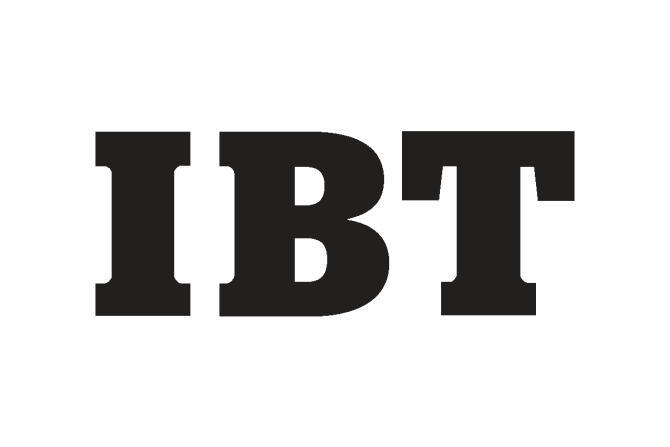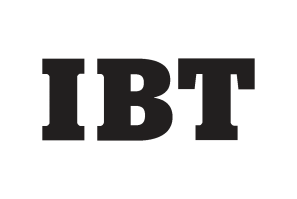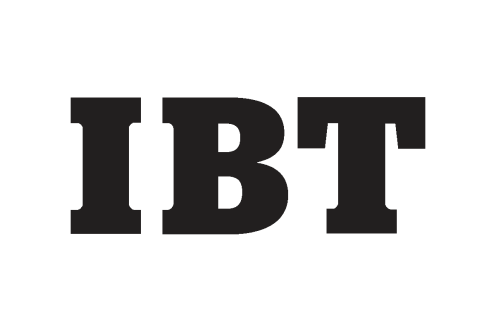Global rice prices are expected to rise by 6% to 7% this month or early next as foreign demand increases amid lower supply due to climate change. According to Thai Rice Exporters Association, foreign purchase orders have already resumed, and a flood of orders is anticipated next month to serve the many year-end festivals.
The hot news now is the BHP Billiton's unsolicited offer to buy Canadian fertiliser company, PotashCorp for $40 bn and PotashCorp taking alternative measures to block the bid. It is not yet clear why fertiliser companies have suddenly become hot favourites for acquisitions and mergers.
World wheat prices continued to climb as drought stricken Russia reported a further decline in yields from its grain harvest while import orders are on the rise. Russia's agriculture ministry said the country had harvested 40.3m tonnes of grain by bunker weight as of August 19, 38% less than a year ago. Bunker weight is typically about 7-8% higher than the clean weight used.
It is the time for mergers and acquisitions in the mining sector. After the recent copper miner Vedanta's takeover of Cairn India, now two gold mining majors in Australia announced their merger on Tuesday. According media reports, Australian gold miner Newcrest bought rival Lihir Gold with the deal creating the fourth largest group in the sector.
Global oil prices dropped below $73 a barrel in Asian trade Tuesday mainly after the dollar gained strength amid weak economic trends. Light sweet crude for October delivery was seen trading at $72.75 a barrel at 11.30 a.m Singapore time while Brent crude for October was at $73.28 a barrel in London.
Gold prices continued its southern journey in Asian trade Tuesday mainly on a strong dollar and weak equities that prompted investor's to sell the yellow metal.
Gold for immediate delivery was seen trading at $1220.54 an ounce at 12.00 noon Singapore time while U.S. gold futures for December delivery was at $1,222.4 an ounce on the comex division of Nymex.
The onset of the festive season in the Indian subcontinents has left India's jewellery makers bewildered as the demand for the yellow metal did not match the expectations of the bullion marketers, who believed jewellery buying during festivities to shoot up despite peaking up prices.
The upbeat kharif sowing statistics in India is likely to moderate the dependence on imported oil in the current year.
The data from the Ministry of Agriculture informed that the area under kharif oilseeds crop as on 19th August 2010 shows an increase of about 4 lakh hectares during the week and is reported at 161.40 compared to 153.19 lakh tonnes at the same time of the last year.
Oil prices rebounded in the early trades today, gaining as much as 0.7% at $74 per barrel drifting at a six-week low with dollar getting weaker on the back of raising US economic concerns.
The firmness in the Chinese stock markets also fuelled prices. The US crude for delivery in October rose as much as 48 cents, or 0.7 percent, to $74.30 a barrel on the New York Mercantile Exchange, and was at $74.17 at Singapore, while October ICE Brent gained 36 US cents to $74.62.
Gold prices held steady near $1,230 an ounce in Europe on Monday as uncertainty over the outlook for the global economy continued to support investment in the precious metal as a safe store of value.
Spot gold was bid at $1,226.60 an ounce at 0939 GMT (5:39 a.m. EDT), against $1,226.95 late in New York on Friday. U.S. gold futures for December delivery eased 90 cents to $1,227.90.
Oil rebounded to top $74 a barrel on Monday on a weaker dollar, but prices stayed close to last week's six-week lows on bulging U.S. inventories and a lack of hurricane activity in the Gulf of Mexico.
The market gained support from the weaker U.S. dollar, which makes oil cheaper for holders of other currencies .DXY, and from a firmer start to trading by European equities.
Oil rebounded as much as 0.7 percent to top $74 on Monday on a weaker dollar, but prices stayed close to last week's six-week lows on a combination of lackluster economic indicators, rising risk aversion and a lack of hurricane activity in the Gulf of Mexico.
Gold regained strength on Monday as bargain hunters resurfaced after prices dropped slightly in the previous session, while demand from investors was likely to offset gains in the U.S. dollar.
Recent poor data from the United States pointed to a faltering economy, and some investors also ditched the euro on worries of more economic weakness ahead in the euro zone.
Crude oil prices continued their downward spiral during the week as new data confirmed that U.S. economic growth is slowing. The benchmark West Texas Intermediate contract settled 2.6% lower for the week on Friday, at $73.46 a barrel compared to the $75.39 close a week ago, itself a decline of 7% from the previous week.
Indian gold market this week witnessed some busy business as the festival season is nearing fast. India will celebrate Raksha Bandhan on August 24 and the southern state of Kerala, which is the largest consumer of yellow metal in India, will celebrate Onam on August 23.
Last week US jobless claims data increased concerns that US may be tipping back to into recession and The Reuters/Jefferies CRB Index of 19 raw materials dropped to the lowest level since July 29, while the dollar advanced. This resulted in weakness in gold, base metals and energy complex. The Baltic Dry Index, a measure of commodity shipping costs, had its biggest two-week gain in 14 months as Chinese iron ore buying extended a surge in charter rates for vessels that carry the steelmaking raw m...
In an obvious hint to the imminent platinum and palladium supply woes, the JPMorgan Chase said that the metals will witness a huge rise in prices due to the concerns over implementing changes to mining rules in South Africa, which is the largest producer of the metals.
Concern about rule changes intensified in recent weeks as Kumba Iron Ore and Lonmin said the government had deprived them of mining rights. The ANC is preparing to discuss mine nationalisation at a congress next month.
At a time when China is hurrying to open up its gold bullion sector, India is shying away from allowing banks to invest in Gold exchange-traded funds (ETFs).
This has come to light recently as the Forward Markets Commission (FMC), the commodity futures market regulator, suggesting to the Reserve Bank of India (RBI) that banks should not be allowed to invest in gold ETFs.
U.S. crude oil prices fell below $74 a barrel after this week's feeble U.S. economic data raised doubts about the top oil-consuming nation's ability to use up its highest petroleum inventories in two decades.
U.S. crude prices for September fell 73 cents to $73.70 a barrel by 1220 GMT on contract expiry day, continuing a two-session drop.
All the signs of a gold boom were visible at the venue of the India International Jewellery Show (IIJS) in Mumbai this week. Even as India gets ready for ushering in the festival season with Raksha Bandhan on August 24, the IIJS provided a perfect start for the gold market in the country.
Crude was steady near a six-week trough below $75 a barrel, after weak U.S. economic data signaled the world's top oil-consuming nation will struggle to work through the most ample petroleum inventories in two decades.
Gold rose on Friday, holding near a 1- month high hit the previous day as worries about a deepening U.S. economic slowdown escalated and helped push up holdings in the ETF for the third consecutive day.
Gold extended gains in Asian trade Friday as its appeal as a safe haven asset soared on reports of deepening U.S. economic concerns.
Gold for immediate delivery was seen trading at $1232.18 an ounce at 12 noon Singapore time while US gold futures for December delivery was at $1,235.47 on the comex division of Nymex.
Asia's time has come as far as bullion market is concerned. Now, London's Dominance of gold bullion dealing worldwide faces a major challenge in the fast-rising Asian jewelry and investment markets.
Kerala-based non-banking finance company, Manappuram General Finance & Leasing, is planning to raise around Rs 1,000 crore through a qualified institutional placement (QIP) in the third quarter of the fiscal.
Gold prices rose to a seven-week high at $1,234.55 an ounce on Thursday after data showed new U.S. claims for unemployment benefits unexpectedly hit a nine-month high last week, pressuring the dollar.
Oil rose toward $76 on Thursday, boosted by a rally in equity markets in Asia and Europe on expectations of strong economic growth in China and Germany.
Shares in Hong Kong and Shanghai climbed, with resources companies outperforming the broader market as news of mega-mergers also whetted risk appetite in the sector.
ETF Securities said ETFS Physical Swiss Gold Shares had a record day's trading volume on August 11 of 1.74 million shares, or $208 million. This represents the greatest one-day volume since its first US trading day on September 9, 2009.
Oil prices remained highly volatile in Asian trade Thursday as strong dollar and US crude inventories offset equity gains in the region.
Light sweet crude for September delivery was seen trading at $75.54 a barrel at 12.00 noon Singapore while Brent crude was at $76.31 a barrel in London.
Russian grain imports are likely to soar after the country's worst drought in more than a century damaged its harvest and forced it to ban exports, analysts said on Thursday.
Analysts estimate that Russia, usually a major grain exporter, may have to import 1.5-2.2 million tonnes this year after the worst drought in more than a century damaged its harvest, but a report in Vedomosti daily said Russia could import at least 5 million tonnes of grain this year.





















